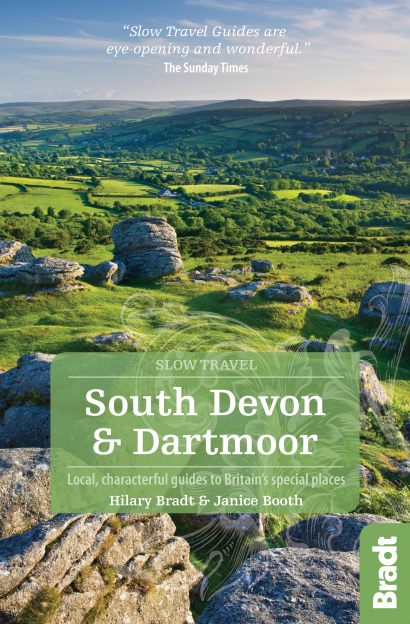In Britain, we’re so used to complaining about the weather forecast we often forget just how accurate it generally is – and Devon is no exception. I know people who set out determinedly, booted and waterproofed, into horizontal rain but I’m not one of them.
Devon has some of the best walking country in England and it deserves to be seen through slanting sunshine, not slanting rain. For wet days there are some wonderful country houses, excellent museums and other interesting indoor attractions. And the good news is that more and more are now opening up once more. Here is a selection of some of my favourite wet-weather activities from across the county.
The Gnome Reserve
The little fellows deserve their reserve; after all there are over 2,000 of them, dotted around the dark mossy woods and involved in every activity you can imagine. You’ll find them cycling, skateboarding, wielding a tennis racket, a javelin or a violin and riding anything that moves: a bicycle, aeroplane, duck, pig, and a snail (at least I think it’s a snail).

There are two gnomes on their potties, mooning at delighted children, and one luxuriating in his bath. All in all they are having a wonderful time, and visitors are expected to play their part. You are greeted by the indefatigable owner, Ann Atkin, who asks you to select an ‘almost compulsory hat’ to wear as you tour the garden. Trained as an artist, she has been collecting gnomes since 1979 and it remains a family concern, with her daughter-in-law Marg baking the scones for the cream tea that any visitor should indulge in before going gnome.
Kents Cavern
I’ve had quite a few depressingly commercial and dumbed-down cave experiences and feared that Kents Cavern would be all entertainment and no education. Well, I was wrong. It’s wonderful! The prize find at the cavern was a fragment of Homo sapiensjaw bone which was recently dated to almost 40,000 years ago, making it the oldest fossil of modern man found in Britain.
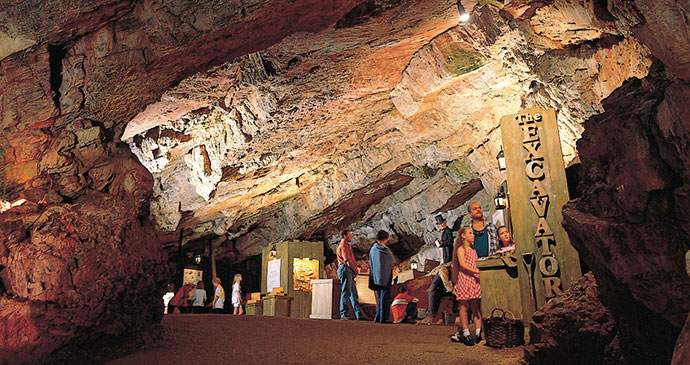
We learned about William Pengelly, the first cave scientist, and his work excavating and identifying the bones found here. There’s a model of the great man, frock coat and all, which highlights the difficulty of maintaining Victorian decorum in these conditions. Among the animal remains found in the cave were the teeth of woolly mammoth and scimitar-toothed cat, as well as a large number of hyena bones.
Recent evidence suggests that the humans using the cave may have been cannibals: marks from flints used to butcher animals were found on human bones. The stalactites and stalagmites are a real gem, too – and knowing that it took them 60,000 years to get that way adds to one’s appreciation.
Seaton Jurassic
One thing to make clear: Seaton Jurassic isn’t Jurassic Park . Tyrannosaurus rex doesn’t stalk the corridors nor does velociraptor terrify visitors in the toilets.
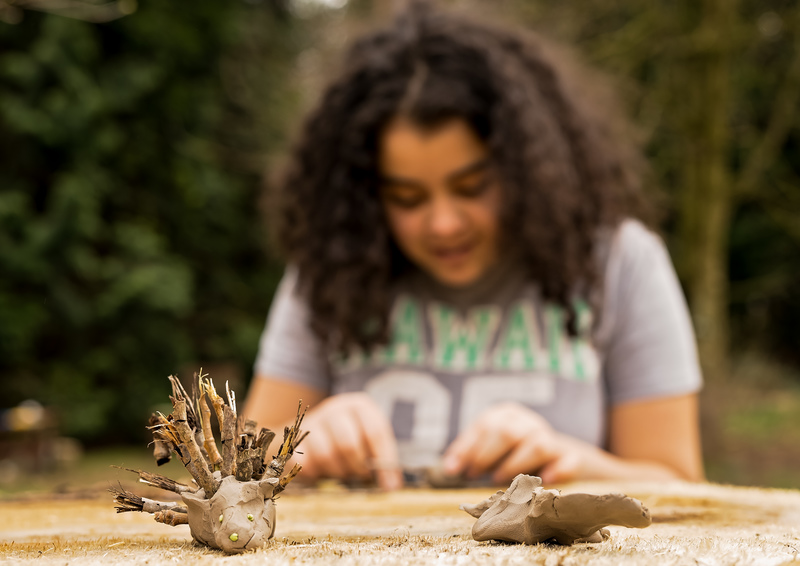
It is as much about survival as it is about extinction as it takes you on a journey through time, over land and under water, celebrating the fact that Seaton is unique on the Jurassic Coast in that you can see in one place all three components of the Mesozoic period: the Triassic, Jurassic and Cretaceous eras. And it celebrates the great landslide of 1839 which exposed these rocks and so excited the Victorian geologists of the time. It’s absolutely terrific!
Quince Honey Farm
You can’t judge a book by its cover. This garish building on South Molton’s main road houses a truly amazing exhibition. If you thought you knew quite a bit about bees you will find that you have only scratched the surface.
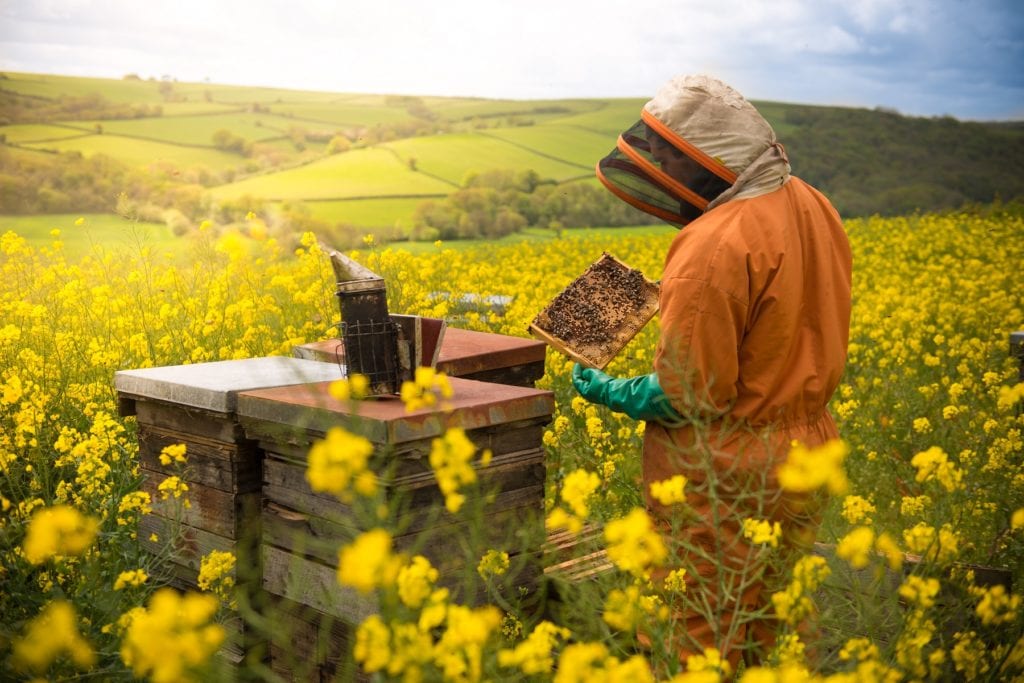
Here you will learn about the history of bee keeping, going back some 10,000 years; the different species of bees; and where and how they make their homes in other parts of the world. There are observation hives that you can open yourself (by remote control), films, explanatory panels, and bees everywhere, but always behind glass.
You can watch the various stages of the commercial aspect of bee keeping, from candle-making to extracting the honey and bottling it, and you can learn a great deal about these remarkable creatures.
Pennywell Farm
Forget conservation and endangered species, this hands-on animal place is just that – its aim is to bring humans and animals as close together as possible and as such it offers one of Devon’s most rewarding experiences for children.
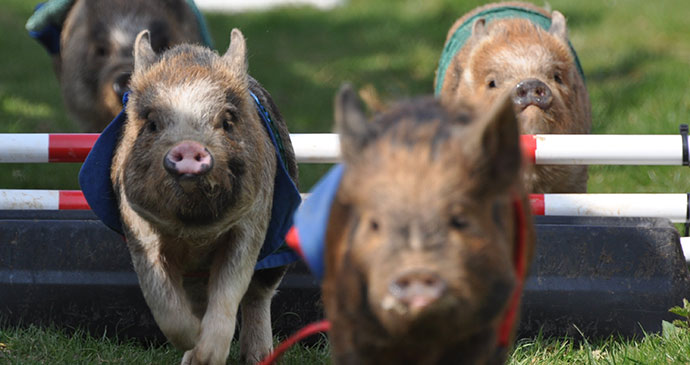
Just look at the expression of a little girl gently stroking a tiny dozing piglet, and you’ll see how well it works. Or sometimes doesn’t: the squeals of disgruntled piglets can be heard from far off, but whenever a baby cries there are nursemaids – or nursemen – on hand to take it back for a soothing word or two.
Pennywell has been selectively breeding miniature pigs since 1992, with the result that a piglet weighs just eight ounces at birth and grows to about the size of a springer spaniel. It’s not just the miniature piglets you can hug. The rabbits and older piglets are remarkably tolerant of human attention too, and selected ones are held in pens where visitors can join them for a stroke.
Bicton Park
These splendid gardens are a mini-Kew with glass houses for different climates – arid, temperate and tropical – plus a palm house which is actually older than Kew’s (it was built in 1820).
There is also a super Countryside Museum so even if it’s pouring with rain, as it was when I last visited, there’s plenty of undercover enjoyment including a good restaurant.
The Golden Hind
Prominent in Brixham’s harbour is a replica of Sir Francis Drake’s original ship in which he circumnavigated the globe, a feat which brought him lasting fame. Barely 100ft long, the ship is packed with interest, particularly for children who can collect stamps to show what they’ve seen, and be awarded a poster giving them honorary pirate status. And they can walk the plank, although sadly for desperate grandparents, it is only a safe simulation (opening 4th July).
Adults will marvel at the cramped space that could house 70 men, ten of them officers. Only Drake had a cabin; the rest bedded down wherever they could. Among the well-labelled displays are weaponry, entertainments (the ship carried a band for part of the voyage), cooking facilities, and little nuggets of information such as why birds were kept captive: if the ship was lost they would be released to fly to the nearest land.
Read more in Hilary’s Slow Travel Devon series:


